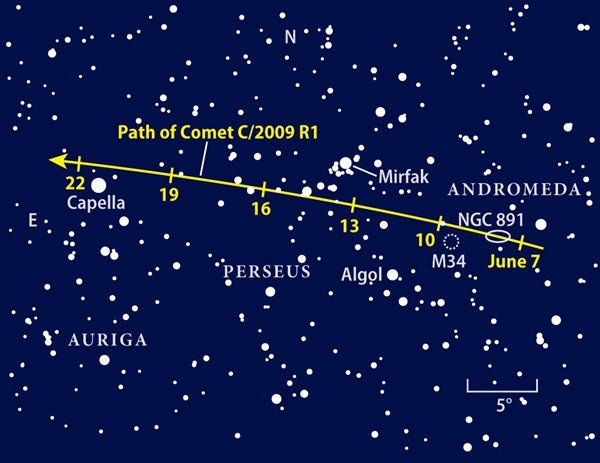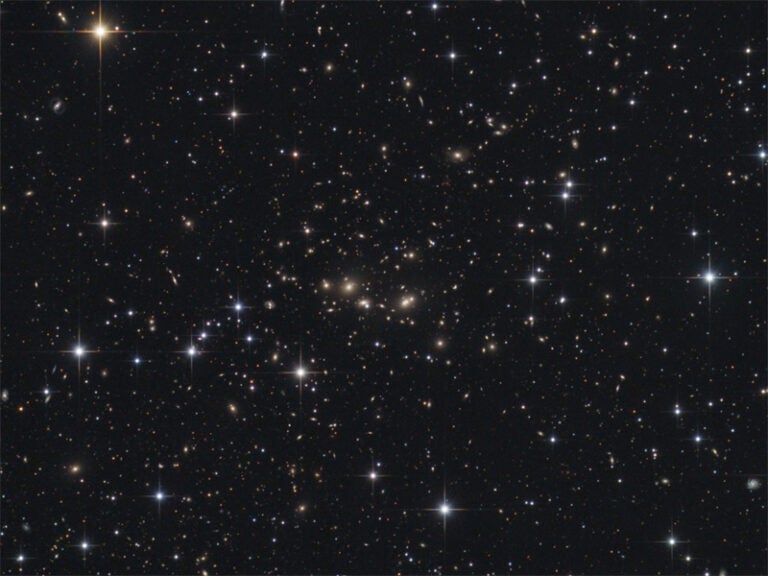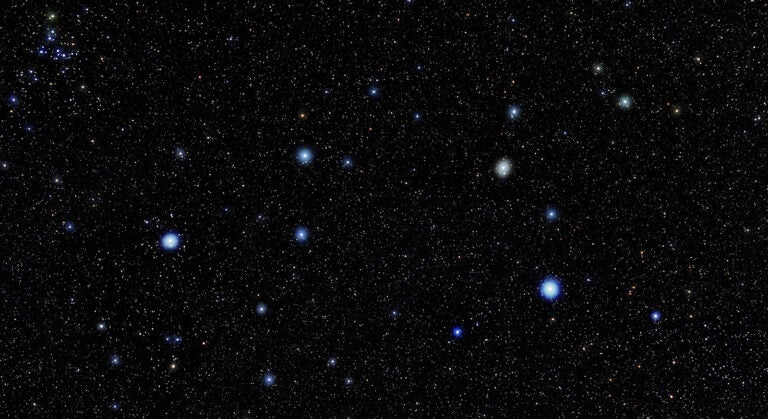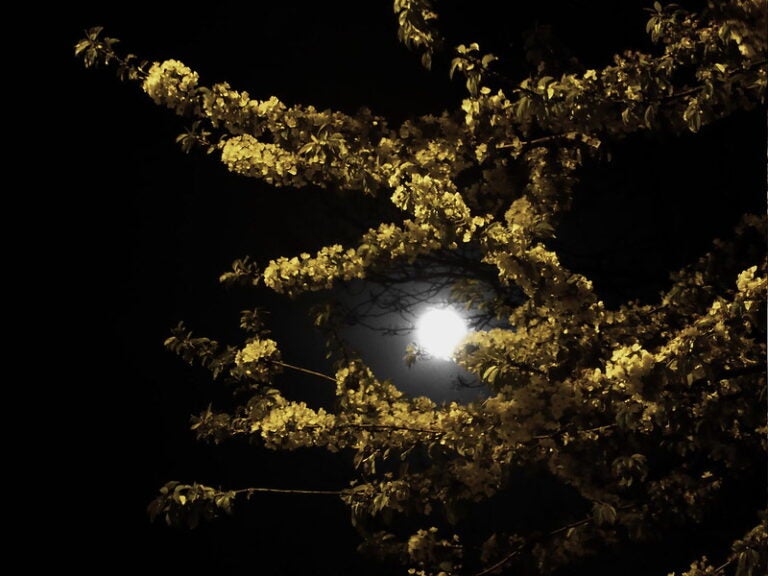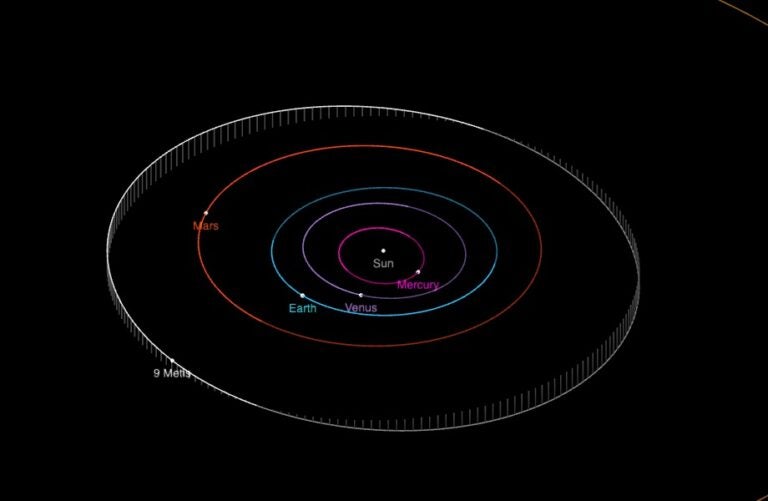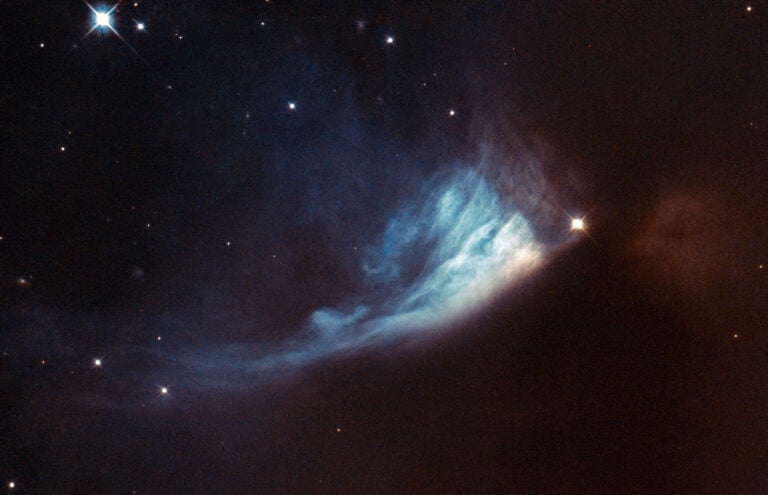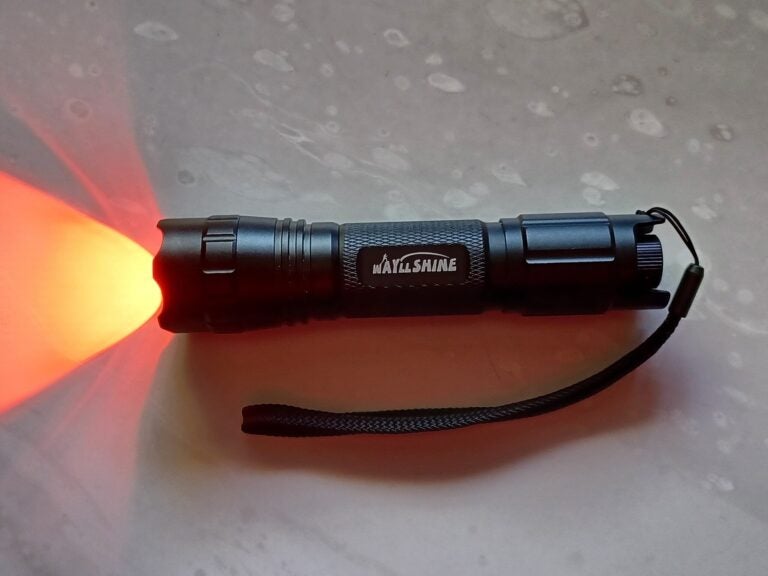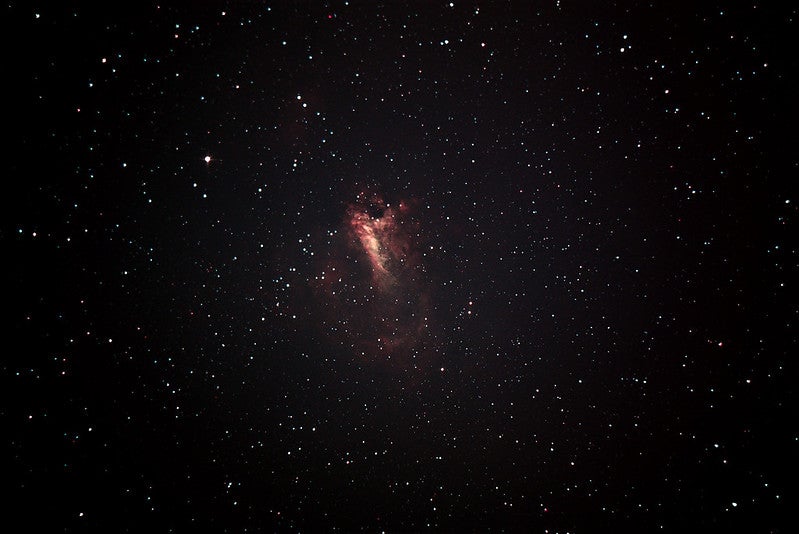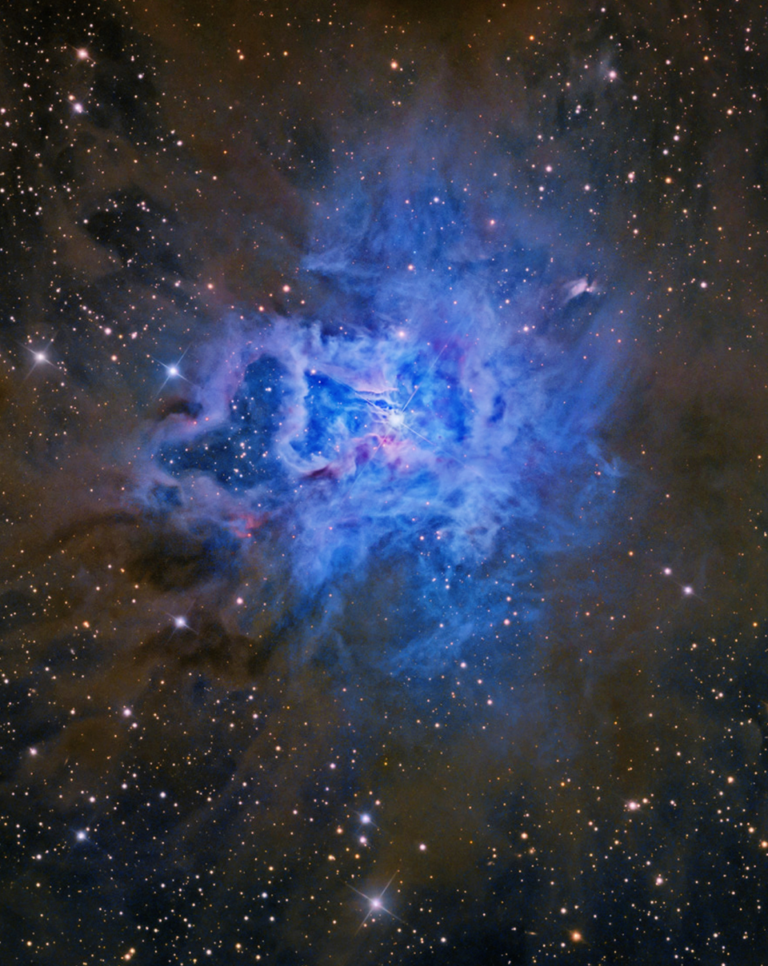Northern Hemisphere observers have waited a long time to see a naked-eye comet with a distinct tail. With any luck, the wait will end this month. For Comet C/2009 R1 (McNaught), observers can look for it with unaided eyes, follow up with a view through binoculars, and finish with a close-up observation through a telescope. Through even a medium-sized scope, the comet’s tail should look like a celestial sword angling upward into the northern sky.
Australian astronomer Robert H. McNaught discovered this comet September 9, 2009. He was using the 19.7-inch (0.5 meter) Uppsala Schmidt Telescope as part of the Siding Spring Observatory Survey, which searches for near-Earth objects. At the time of discovery, Comet McNaught glowed faintly with a light 25,000 times fainter than the human eye can detect.
The comet will be a treat for both viewing and photography after
midnight. If predictions hold, Comet McNaught should glow around 5th magnitude as it floats across the sparkling stars of the constellation Perseus the Hero in mid-June. (5th magnitude means that the comet’s light output will be about 4 times as bright as the faintest stars the eye can perceive from a dark site.)
Two of Perseus’ deep-sky objects — open star cluster M34 and the Alpha Persei Association — will frame this solar system interloper nicely. The prize shot comes the morning of June 8, when the comet’s tail sweeps a veil of solar system dust in front of the edge-on spiral galaxy NGC 891.
The weekend of Friday, June 11, through Sunday, June 13, offers the darkest sky. New Moon occurs at 7:15 a.m. EDT on the 12th. Astronomy magazine Senior Editor Richard Talcott said, “A comet this bright isn’t something that happens all the time, so go have a look. It’s easy to find because of all the bright stars around it.”
Comet McNaught will move northward during June. On the 21st, it passes less than 2° above the star Capella in the constellation Auriga the Charioteer. Capella is a yellow star that ranks as the night sky’s sixth-brightest luminary.
The 21st also marks the morning of the June solstice, the start of summer north of the equator. Unfortunately, observers living far north can’t benefit from McNaught’s higher position because of twilight that lasts all night and because of potential interference from noctilucent clouds, which glow high in our atmosphere long after the Sun has set.
- StarDome: Locate Comet McNaught in your night sky with our interactive star chart.
- Learn more about comets with Astronomy.com’s Intro to the Sky
- Sign up for our free weekly e-mail newsletter

